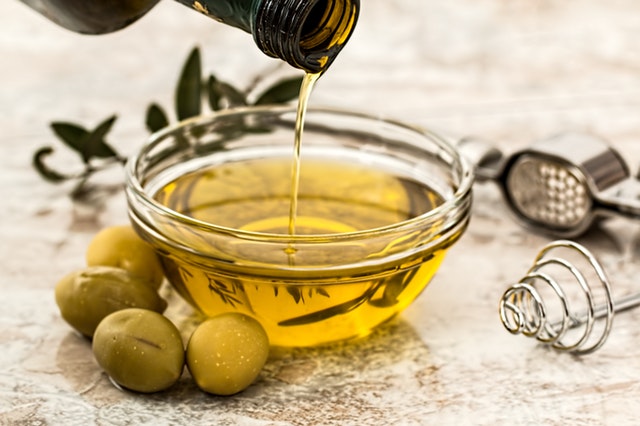Research shows a clear association of olive oil to benefits for heart disease and related conditions including, cholesterol levels, blood pressure levels, type 2 diabetes and obesity. But with regards specifically to cancer risk, although research is suggestive of possibly lowering risk for cancer, research is limited.
A point I can’t stress enough is that the real key is regularly following a healthful dietary eating pattern and lifestyle. This means using healthy monounsaturated olive oil to replace unhealthy fats like saturated fats (butter, coconut oil and palm oil.) Using olive oil in this way, it can play a role in weight management. So don’t down it like water!
Now that you’ve decided to swap in this healthy fat, you go to the store to buy olive oil and that’s when you say, whoa, how do I choose which one to purchase? This was my recent mindset. There are so many different brands and types on the shelve and each bottle was prettier than the next with a fancy Italian name, I’m sure a marketing ploy to add to the “authenticity” of the oil.
Which Oil Should I Buy?
I’m going to try to help you out a bit so you can make an informed decision as to which one to purchase. First off, all olive oils have the same amount of calories and fat, 120 calories and 14 grams of fat. When a bottle of olive oil is labeled “light” that’s referring to the color, not that it has less calories. And by the way, color does not affect the taste.
Olive oils contain vitamin E and other polyphenols (health-promoting phytochemicals in plants). The difference between regular olive oil and extra virgin olive oil is that regular olive oil is refined and therefore much “more processed.” More processing means more of the healthful properties get stripped away…so stick with extra virgin!
The refining “process” can involve several processes including the use of heat, chemical solvents, bleaching and deodorizing. Besides extending shelf life of the product (pro for the manufacturer), it results in the removal impurities and other undesirable flavors, colors and odors. The downside to processing is it decreases the oil’s health-promoting nutrients.
Two other terms that are also used when referring to olive extraction methods are expeller pressed and cold pressed. If olives are expeller pressed to make olive oil, no solvents are used during the process. Cold pressed goes a step further than expeller pressed in that it also controls for temperature. Hence, cold pressed is the best quality.
Another way to ensure you’re getting good quality olive oil is to look for different certification seals such as the USDA Quality Monitoring Program, the North American Olive Oil Association (NAOOA), the California Olive Oil Council (COOC) and the Extra Virgin Alliance (EVA). Standards amongst the certifying organizations are similar, but do vary in some ways.
Ways I Like to Incorporate Extra Virgin Olive Oil:
- Use along with a vinegar or citrus juice to make salad dressings or marinades for grilling.
- Toss (along with herbs and spices) on vegetables to roast or drizzle a little on already roasted vegetables.
- Lightly coat a fry pan before sautéing foods. (Yes, you can sauté with olive oil!)
- Substitute olive oil for butter when baking. (Some conversions are: 1 tsp butter = 3/4 tsp olive oil, 1/4 cup butter = 3 Tbsp olive oil, 1/3 cup butter = 1/4 cup olive oil, 1/2 cup butter = 1/4 cup olive oil + 1 Tbsp)
As always, please ask any questions and share your thoughts!
Wendy Kaplan, MS, RDN, CSO, CDCES, CDN is a registered nutritionist specializing in oncology and weight management in Long Island and in the New York City area. Connect with Wendy on Facebook, Instagram and Twitter and read more of her blog posts and download recipes at Food4HealthRD.comof her blog posts and download recipes at Food4HealthRD.com


0 Comments